The Onroad trip
We strive to form a community of interactive travelers, who would be sharing their experiences and travel information of their trips in a concise and encouraging way so as to help and guide other fellow travelers.
Be it an adventure, spiritual, fun, family vacation, spontaneous, wildlife, seasonal, sports, shopping, golf, spa, nightlife etc.....just pen down a few lines and add a few photos to make it a piece of valuable information.
Contribute your articles to info@visitindia.org.in.........or through Facebook at Visitindia (the onroad trip) page
Adventure Sports in India
Home - Theme travel - National Parks & Wildlife Sanctuaries
National Parks and Wildlife Sanctuaries in Uttarakhand
The state has 12 National Parks and Wildlife Sanctuaries which covers 13.8 percent of the total area of the state. The various Parks and Sanctuaries are locating at different altitudes varying from 800 mts to the high altitude Protected Areas at 5400 mts. Apart from these there are two Conservation Reserves– The Asan Barrage and Jhilmil Tal conservation Reserves, two World Heritage sites of the Nanda Devi Biosphere reserve and Valley of Flowers National Park.
The state can boast of the first national park of the Indian Sub-continent-the Corbett National Park, with its major attractions being tiger, elephant and leopard. It also supports a wide variety of birds sharing its boundary with the Rajaji National Park.
The high altitude National Park includes the Nandadevi National Park and the Valley of Flowers National Park which are regarded as unique creation of nature. They have become popular with trekkers and mountaineers. Almost 300 species of wild flowers bloom here and attracts nature lovers, botanists, ecologists, zoologists, ornithologists and trekkers. Other National Parks and Sanctuaries include Binog Wildlifie Sanctuary near Mussoorie, Govind Pashu Vihar and National Park, Askot wildlife Sanctuary, Kedarnath Wildlife Sanctuary, Sonanadi Wildlife Sanctuary, Binsar WLS near almora, Gangotri National Park.
Jim Corbett National Park
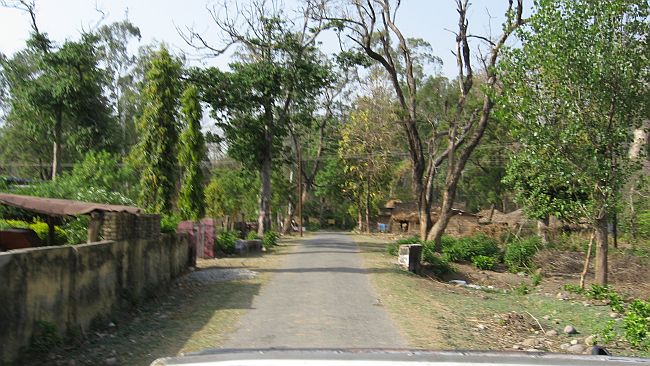
The first wildlife reserve of India, Corbett National Park was established in 1936, as the Hailey National Park. Later it changed to Ramganga and finally Corbett National Park in the honor of legendary hunter-turned- conservationist, best known for hunting man-eating tigers and leopards in The Kumaon and lower Garhwal.
Corbett National Park is known for its varied wildlife, and as the site for the launching of Project Tiger. Corbett National Park was one of the nine tiger reserves created at the launch of the Project Tiger in 1973. The area of the Corbett National Park is 520.84 sq. km. In 1991, an area of 797.72 sq km was added as buffer area of the Corbett Tiger Reserve. Wildlife found in the Corbett National Park include the tiger, elephant, chital, sambar, nilgai, gharial, King Cobra, wild boar, hedgehog, common musk shrew, flying fox, Indian Pangolin, and nearly 600 species of birds. A variety of facilities are available to house tourists within and outside the park.
When to visit: The Park remains open from 15th Nov- 31st March and reopen from 1st Feb to 15th June.
How To Reach Corbett National Park:
By Air: Pantnagar at a distance of 50 km is the nearest airport. Delhi at a distance of 300 km is the nearest international airport.
By Rail: Ramnagar is on the broad gauge track from where the road transport options have to be availed to reach the Park. The main reception centre is located in Ramnagar where where permits are issued for the three tourism zone of the National Park.
By Road: Dhikala is 300 km from Delhi, 403 km from Lucknow and 51 km from Ramnagar. The route from Delhi spans Hapur-Murababad-Ramnagar. The turn off is some 7 km beyond Muradabad to the left, marked by a small board. The route from Lucknow spans Bareilly. Kichha. Rudrapur. Doraha. Kashipur.
Where to stay
Accomodation is avaible in the several Forest Rest Houses maintained by the Forest Department. Permission for staying in the Forest Rest Houses inside the park needs to be taken in advance from the office of the Director. However there are several hotels and resorts outside the Park offering varied accomadation. Garwal Mandal Vikas Nigan too has a TRC in Ramnagar.
Contact
Director Corbett Tiger Reserve
Ramnagar
Phone No - 05947-253977
Fax: 05947- 251376, +91-9412085591
__________________________________________________________________________________________________________________________________________________________
Rajaji National Park
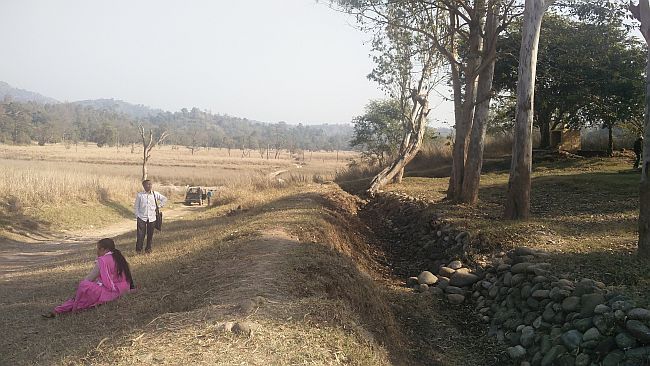
Rajaji National Park is situated along the hills and foothills of Shivalik ranges in the Himalayan foothills and represents the Shivalik eco-system. Spread over an area of 820.42 sq km, Rajaji is a magnificent ecosystem nestled in the Shivalik ranges and the beginning of the vast Indo–Gangetic plains, thus representing vegetation of several distinct zones and forest types like sal forests, riverine forests, board–leaved mixed forests, scrubland and grassy.
On the map it is located between Haridwar and Dehradun and Chillawali.Three sancturies in the Uttarakhand Shivaliks - Rajaji, Motichur and Chila were amalgamated into a large protected area and named Rajaji National Park in the year 1983 after the famous freedom fighter Late Sri C. Rajgopalachari; popularly known as "Rajaji".
It possesses as many as 23 species of mammals and 315 bird species. The abundance of nature’s bounties heaped in and around this park, attracts a large number of wildlife conversationalists, nature lovers to visit this most breathtaking wilderness area. The uniqueness of the Parks stands in that it is the northern most limits of the Tiger, Asian elephants, King Cobra and certain bird species.
When to visit: The Park remains open from 15th Nov- 31st March and reopens from 1st Feb to 15th June.
Where to Stay : The Park has excellent lodging facility with 10 Forest Rest Houses maintained by the Park authorities in the four tourism zones. Catering facilities are not available in some of the FRH, but visitors are allowed to cook their own food. Permission needs to be obtained in advance from the Director of the Park who has his office in Dehradun
How to Reach
BY RAIL & ROAD - The Park is easily accessible from Haridwar, Dehradun, and Rishikesh. Dehradun (where the headquarters of the Park is located) can be reached from most of the important places in India by rail or road.
BY AIRThe city is also on the air network and connected to Delhi. The Park has seven entry points accessible from all of the four cities mentioned above by road.
Contact:
Director
Rajaji National Park
5 Tilak Road
Dehradun, Uttarakhand
Phone:0135-2621669
__________________________________________________________________________________________________________________________________________________________
Nanda Devi National Park & Wildlife Sanctuary
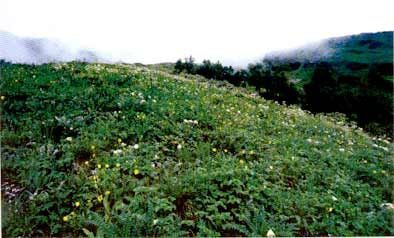
Nanda Devi National Park offers an unparallel experience. The Nanda Devi National Park (NDNP) is one of the very few wilderness area in India that has remained naturally protected. The Nanda Devi basin was declared as Nanda Devi Sanctuary in 1939. An area of 630 sq. kms was added as Nanda Devi National Park in the year 1982 which is now a part and core zone of Nanda Devi Biosphere Reserve. The Park became a world heritage site in the year 1988. Some of the important peaks encircling the National Park are Dunagiri (7066mt), Changband (6864mt), Kalnka (6931mt) Rishi pahar (6992 mt) Mangraon (6765mt), Nanda Khat (6631 mt), Maiktoli (6803 mt), Mrigthuni (6655mt), Trishul-1 (7120mt), Trishul-II (6319mt), Bethartoli Himal (6352mt) and Nandadevi East (7434 mt.)
Nanda Devi National Park is an outstanding mountain wilderness with few if any parallels elsewhere in the Himalayas on account of its concentration of high peaks and glaciers lying within a range of near - pristine habitats. It lies within a bio geographical transition zone between the Western and Eastern Himalayas and supports a variety of threatened and uncommon species of large mammals.
The Nanda Devi National Park the world heritage site has unique topography, climate, and soil and it supports diverse habitat, species, communities and ecosystems. The area is reputed as one of the most spectacular wilderness in the Himalaya and is dominated by "Nanda Devi Peak" which is a natural monument and India's second highest peak.
Trek for the park negotiates a steep assent at high altitude zones within 13km route from 2000 mt. at village Lata to 4250mt. to Dharasi - the topmost point. Get a thorough medical check up done before taking this arduous trek.
Best time of visit From 15th June to 15th September.
Contact:
Joshimath- D.F.O's Office (on the Joshimath Auli road about 1 km from main Bazar)
Lata- about 21 km on the Joshimath-Malari road.
Tolma- On the Joshimath - Malari road about 30 km from Joshimath.
__________________________________________________________________________________________________________________________________________________________
The Valley of Flowers National Park
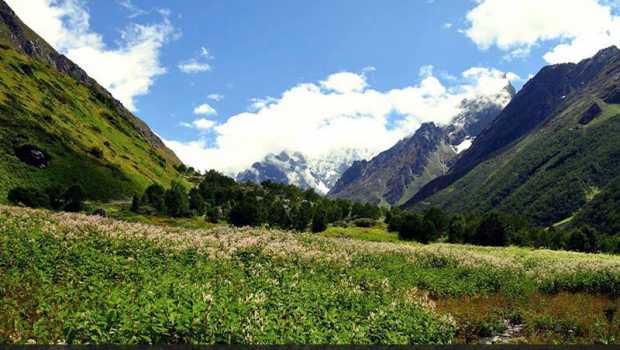
The Valley of Flowers National Park is the second core zone of the Nanda Devi Biosphere Reserve. The credit for the discovery of the Valley of Flowers goes to the British mountaineers Franks S. Smythe and R.L. Holdsworth who incidentally reached this valley after a successful expedition of Mount Kamet in 1931. Fascinated by its beauty and grandeur Frank S. Smythe revisited this area in 1937 and published a book named "Valley of Flowers" (1938). However, there is no doubt that Frank s. Smythe's writing made this valley world famous. The valley of flowers lies in the main valley of Alaknanda and Laxman Ganga in the Garhwal Himalayas in Chamoli district of Uttarakhand. Pushpawati river flows through this valley which has it's source in the Tipra Glacier which extends upto Ghori Parbat Peak. It is a flat valley 5kms long and 2km. wide. Its altitudinal range varies from 3200 to 6675m.
The Park is surrounded by Gauri Parbat (6590m) and Rataban (6126m) in the east, Kunthal (4430m) in the west, in the west, Saptsring (5030m) in the south and Nilgiri Parvat (6479m) in the north.
Valley of flowers is a trek of about 16km from Govindghat which is 25km from Joshimath. From Govindghat one has to trek of 13km to reach Ghangaria. After crossing the Alaknanda river at Govindghat, an ascending bridle path along Bhyundar Ganga leads to Ghangharia. From here the valley is situated at a distance of 3km.
Almost 300 species of wild flowers bloom here in natural way. Wherein some of the species are Anemone, Geranium, March marigold. Primula, Potentilla, Geum. Asters Lilium, Himalayam Blue poppy, Aconitum, Delphinium, Ranunculus, Rhododendrons and numerous other. Most of the flowers have medicinal values too. The abundance of Asmanda fern in this valley is a rare sight than in other Himalayan valleys.
Apart from the flowers some species of Butterfly, Musk deer. Blue sheep (Bharal), Himalayan birds & Snow leopard are also found in the park. One fully equipped interpretation centre at Ghangaria is available. At this interpretation centre regular slide shows on Valley of Flowers and wildlife is held in the evening hours through out the season.
The Valley of Flowers National park remains open for visitors from 1st June to 31st October.
Best time of Visit : July - August
Head Quarters : Joshimath
Nearest Railway Station: Rishikesh, District, Dehradun
Nearest Air Port; Jollygrant, District. Dehradun (17km. from Rishikesh)
How to Reach: The valley is approachable from Govindhat.
There are two ways to reach Govindghat:
Rishikesh - Srinagar - Karnprayag - Joshimath - Govindghat -(Distance approx. 270 Km. on/Haridwar- Badrinath highway)
Haldwani - Ranikhet - Karnpryag - Johimath - Govinghat (Distance approx. 332 Km)
Accommodation is available at
Forest Rate House: Govindghat & Ghangaria (Two suites each), Tourist Rest House (GMVN): Ghangaria or with Private Lodge and Hotels at Govindghat and Ghangaria
Contact:
Dy Director
Nanda Devi National Park
Gopeshwar, Chamoli, Uttarakhand
Telefax: 01372-222179, +91-9412082073
Chief Wildlife Warden, Uttarakhand
Camp Office Chandrabani Dehradunv Telefax: 0135-2644691
__________________________________________________________________________________________________________________________________________________________
Gangotri National Park
The Park is situated in Uttarkashi District over a vast area of 2390.02sq.km. . Gangotri, after which the park is named, is one of the four dhamas (pilgrim sites) of Uttarakhand. The park located within the upper catchment area of the Bhagirathi river offers a panoramic view of several waterfalls. It also forms a vital link in the green corridor that extends between the Govind National Park and Kedarnath Wildlife Sanctuary.It provides majestic beauty of coniferous forests and grandeur of glacial world combined with lush green meadows. The forests are Himalayan moist temperate type. Vegetation consists of chirpine deodar, fir, spruce, oak and rhododendrons. The fauna includes snow leopard, brown bear, black bear, Himalayan thar, serow, musk deer, cheer pheasants, partridges, monal, Himalayan snow cock etc.
How to Reach: The airport and rail head is Dehradun. The nearest town is Harsil 30 km away from Gangotri.
The ideal season for visiting the park is summer (April to October).
Accomodation is available at the Forest Rest Houses at Harsil, Bhaironghati, and Gangotri. Garhwal Mandal Vikas Nigam to has TRC at Uttarkashi, Bhaironghati, Lanka, Gangotri and Bhojwasa.
Contact:
Director
Gangotri National Park
Uttarkashi
Uttarakhand
Ph No: 01374-222444, +919411103463
DFO Uttarkashi
Phone: 01374-222444, 9411103463
Fax 01372 226421.
Chief Wildlife Warden, Uttarakhand
Camp Office Chandrabani Dehradun
Ph No :0135 2644691
__________________________________________________________________________________________________________________________________________________________
Kedarnath Musk Deer Sanctuary
The Kedarnath Musk Deer Sanctuary is the most blissful chime of Nature’s bounty and magnanimity. It is spread over an area of 97517.80ha. (25293.70ha. in Chamoli district, and 72224.10ha. in Rudraprayag district.)And was established in the year 1972. Named after the famous shrine of God Kedarnath, located just outside the Sanctuary, it sprawls across the districts of Chamoli & Rudraprayag in the state of Uttarakhand.The pristine forests and bugyals, in their captivating wilderness, along with their keenly preserved and managed rich floral and faunal biodiversity transcend one to a different world of truly idyllic existence. The call of the wild is mesmerizing and captures Garhwal in its true spirit.
The globally dwindling population of the endangered Himalayan Musk Deer (Moschus Chrysogaster) is the cynosure, the flagship species of the sanctuary. It was formed with a primary goal of conserving the globally significant and endangered Himalayan musk deer. However, the rich mixed forests and beautiful terrain of the Garhwal Himalayas, coupled with the presence of the famous Kedarnath temple, has made the area just as famous for its biodiversity and cultural heritage. The sanctuary has some of the richest mixed forests of the Western Himalayas. Sub-tropical, temperate, sub-alpine and alpine forests are all found on the slopes of the innumerable mountains and valleys of the sanctuary, stretching across altitudes from 1160m to 7068m above sea level.
There are as many as 23 mammal species in the Sanctuary, 11 of which are threatened. The high number of endangered animals, including the Snow leopard, Himalayan musk deer, Himalayan thar, Serow, Himalayan black bears, Himalayan brown bears, and Pheasants, make the Kedarnath Sanctuary an area of immense significance. Over 230 species of birds are found in the sanctuary. A Musk Deer Breeding Centre was established in 1982, at Kanchulakharak within the sanctuary, where Musk deer are bred in captivity and then released into the wild.
The surrounding areas of the sanctuary are popularly called Kedar Khand, and are home to the temples of Triyginarayan, Guptkashi, Ukhimath, Kalimath, and Gopeshwar. Access to the temples and the Sanctuary is possible through the Rudraprayag-Gaurikund road, which passes through the western sector, and the Chamoli-Kund road that runs approximately along the south-western boundary of the sanctuary from Mandal to Tala.
Best time to Visit: April & June & September to November.
Nearest Railway Station: Rishikesh, Dist. Dehradun.
Nearest Airport: Jollygrant Airport, District. Dehradun (17km. from Rishikesh)
How to reach:
The two main approaches leading to the sanctuary area are – from Gopeshwar (about 20km. away) and from Guptkashi (about 15km. away)
Contact:
DFO
Kedarnath Wildlife Division
Ph no & Fax: 01372 -252149, +919412029627
__________________________________________________________________________________________________________________________________________________________
Govind Wildlife Sanctuary & National Park
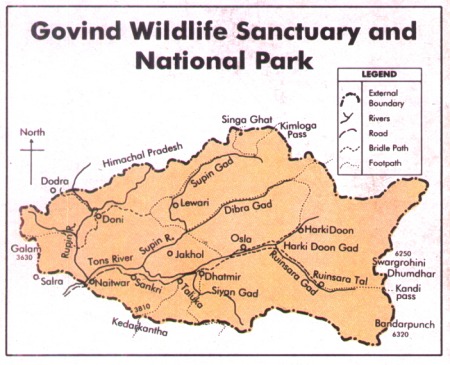
The Park is spread over an area of 472sq.km. and sanctuary in 485.89sq km. in Uttarkashi District. The forest of the park consists of Chirpine, scrub tropical Euphorbia scrub and oak species.
In the Eighth Five-year plan, the Government of India set up the “Snow Leopard Project” to ensure the long-term conservation of the elusive and endangered Snow Leopard. In 1990, a team of experts chose the Govind Wildlife Sanctuary as one of the implementation sites of the project and, subsequently, 472 sq. km within the upper reaches of the sanctuary (the Snow leopard’s preferred habitat) were notified as the Govind National Park. It lies between Longitude: 78.05ºE and Latitude: 31.00 to 31.25ºN. The wild life species found in the park are snow leopard, leopard cat, the brown and the black Himalayan bear, fishing cat, musk deer, serow, thar, goral, sambar, wild boar, etc. The birds found are monal, snow pigeon, green pigeon.
The best period for visiting the best park is from May to October.
Accomadation is available in Forest Rest Houses. The altitude within the park ranges from 1400m to 6323m above sea level and magnificent, jaggered snow-capped peaks mesmerize all visitors. Within the park, the emerald greenery of the Har-ki-dun valley is a paradise for trekkers, while the Ruinsiyara high altitude lake is popular amongst nature lovers. Tourists also frequent the Har-ki-dun Forest Rest House, known for its location amidst a valley of wild flowers. The forest rest houses of Naitwar, Taluka and Osla are en-route to Hari-ki-dun and are worthy attractions in their own right.
Nearest town from the park is Dharkadhi 17km from the Park. The nearest airport is Dehradun at a distance of 190 km. The rail head is also Dehradun.
Contact:
Dy Director
Govind Pashu Vihar National Park & Wildlife Sanctuary
Purola
Uttarkashi ,Uttarakhand.
Ph No: 01375-223433, +91-9450311293
_______________________________________________________________________________________________________________________________________________________________________
